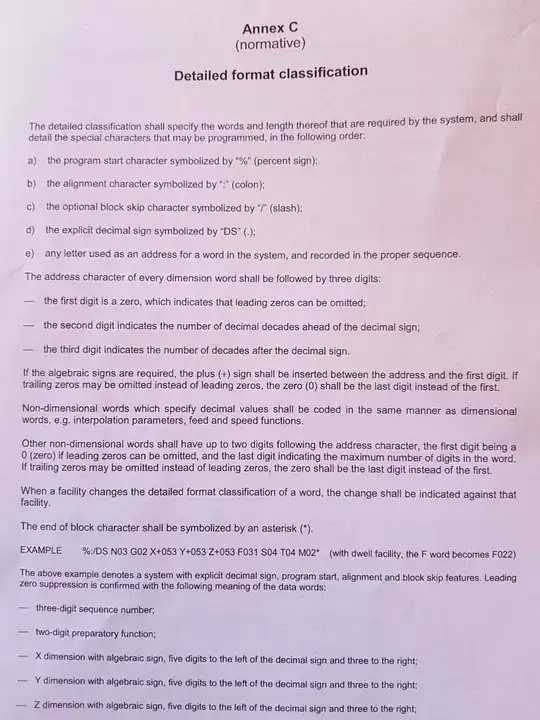For developing a CNC system, I am reading the "ISO 6983-1:2009".
In it, there are several references to what they call "Detailed format classification" which I struggle to understand:
A classification of the data in a block shall be used to specify the programming detail for a system and machine configuration. This is called the detailed format classification and is described in Annex C.
...
Zero omission shall be specified in the detailed format classification (see Annex C).
...
The number of digits shall be designated by the detailed format classification ( see Annex C).
...
It seem this "Detailed format classification" is sort of a definition of the machine on which the program will run. But in this case, I do not understand why this is something part of the program and not some values of the control system.
My question is: What exactly is this "Detailed format classification"?
- Is it part of the program?
- What is it purpose?
